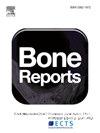The effects of geranylgeranyl diphosphate synthase inhibitor treatment on osteoblast biology and application in a conditioned media model of myeloma bone disease
IF 2.6
Q3 ENDOCRINOLOGY & METABOLISM
引用次数: 0
Abstract
Myeloma bone disease (MBD) is characterized by tumor-induced osteoclast activation with concomitant suppression of osteoblast activity. Nitrogen bisphosphonates (NBPs), including zoledronic acid (ZA), are a mainstay of MBD treatment, due to their anti-osteoclastic effects secondary to high bone affinity and indirect disruption of protein geranylgeranylation through inhibition of farnesyl diphosphate synthase. The development of geranylgeranyl diphosphate synthase (GGDPS) inhibitors (GGSIs) represents a more selective means of targeting geranylgeranylation. The GGSI RAM2061 has direct anti-myeloma activity in vitro and in vivo, achieves both systemic and skeletal distribution, and has anti-osteoclastic activity. However, the effects of this novel therapy on osteoblast activity or in a setting that recapitulates the MBD milieu have yet to be explored. Exposure to RAM2061 or ZA during MC3T3-E1 differentiation resulted in impairment in osteoblast function, including alkaline phosphatase and mineralization activity, however minimal effects were observed in differentiated MC3T3-E1 cells that were subsequently exposed to drug. To evaluate the impact of RAM2061 on osteoblast or osteoclast activity under MBD-like conditions, JJN3 myeloma cell conditioned media (CM) was collected and added to bone cell cultures in order to simulate osteoclast-activating or osteoblast-inhibitory MBD microenvironments. These studies determined that RAM2061 maintains anti-resorptive effects and osteoblast inhibitory effects in undifferentiated precursors while in the presence of JJN3 CM. However, no appreciable effects were detected in osteoblasts exposed to drug post-differentiation. Overall, these studies contribute to the mechanistic understanding of NBP and GGSI effects in the bone and provide support for the continued investigation of GGSIs in MBD.

香叶香叶二磷酸合成酶抑制剂对成骨细胞生物学的影响及其在骨髓瘤骨病条件介质模型中的应用
骨髓瘤骨病(MBD)的特点是肿瘤诱导的破骨细胞激活并伴随成骨细胞活性抑制。双膦酸氮(NBPs),包括唑来膦酸(ZA),是MBD治疗的主要药物,因为它们具有抗破骨作用,继发于高骨亲和力和通过抑制法尼基二磷酸合成酶间接破坏蛋白香叶酰化。香叶酰香叶酰二磷酸合成酶(GGDPS)抑制剂(GGSIs)的开发代表了一种更具选择性的靶向香叶酰化的方法。GGSI RAM2061在体外和体内均具有直接的抗骨髓瘤活性,实现全身分布和骨骼分布,具有抗破骨活性。然而,这种新疗法对成骨细胞活性的影响或在重现MBD环境的环境中仍有待探索。在MC3T3-E1分化过程中暴露于RAM2061或ZA会导致成骨细胞功能受损,包括碱性磷酸酶和矿化活性,但对随后暴露于药物的分化MC3T3-E1细胞的影响很小。为了评估RAM2061对MBD样条件下成骨细胞或破骨细胞活性的影响,收集JJN3骨髓瘤细胞条件培养基(CM)并将其添加到骨细胞培养中,以模拟破骨细胞激活或成骨细胞抑制MBD微环境。这些研究表明,当存在JJN3 CM时,RAM2061在未分化的前体中保持抗吸收作用和成骨细胞抑制作用。然而,在暴露于药物分化后的成骨细胞中没有发现明显的影响。总的来说,这些研究有助于了解NBP和GGSI在骨中的作用机制,并为GGSI在MBD中的持续研究提供支持。
本文章由计算机程序翻译,如有差异,请以英文原文为准。
求助全文
约1分钟内获得全文
求助全文
来源期刊

Bone Reports
Medicine-Orthopedics and Sports Medicine
CiteScore
4.30
自引率
4.00%
发文量
444
审稿时长
57 days
期刊介绍:
Bone Reports is an interdisciplinary forum for the rapid publication of Original Research Articles and Case Reports across basic, translational and clinical aspects of bone and mineral metabolism. The journal publishes papers that are scientifically sound, with the peer review process focused principally on verifying sound methodologies, and correct data analysis and interpretation. We welcome studies either replicating or failing to replicate a previous study, and null findings. We fulfil a critical and current need to enhance research by publishing reproducibility studies and null findings.
 求助内容:
求助内容: 应助结果提醒方式:
应助结果提醒方式:


